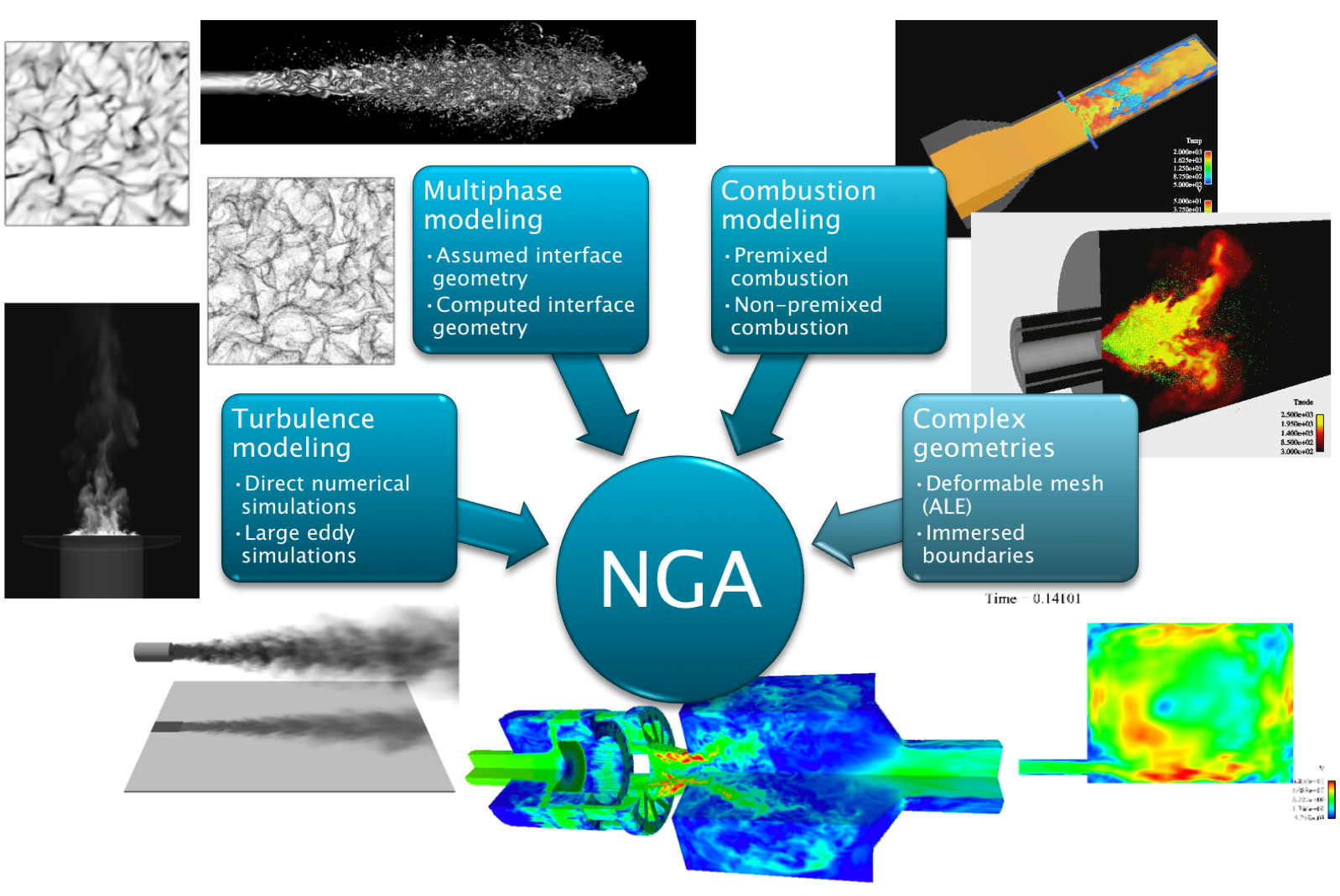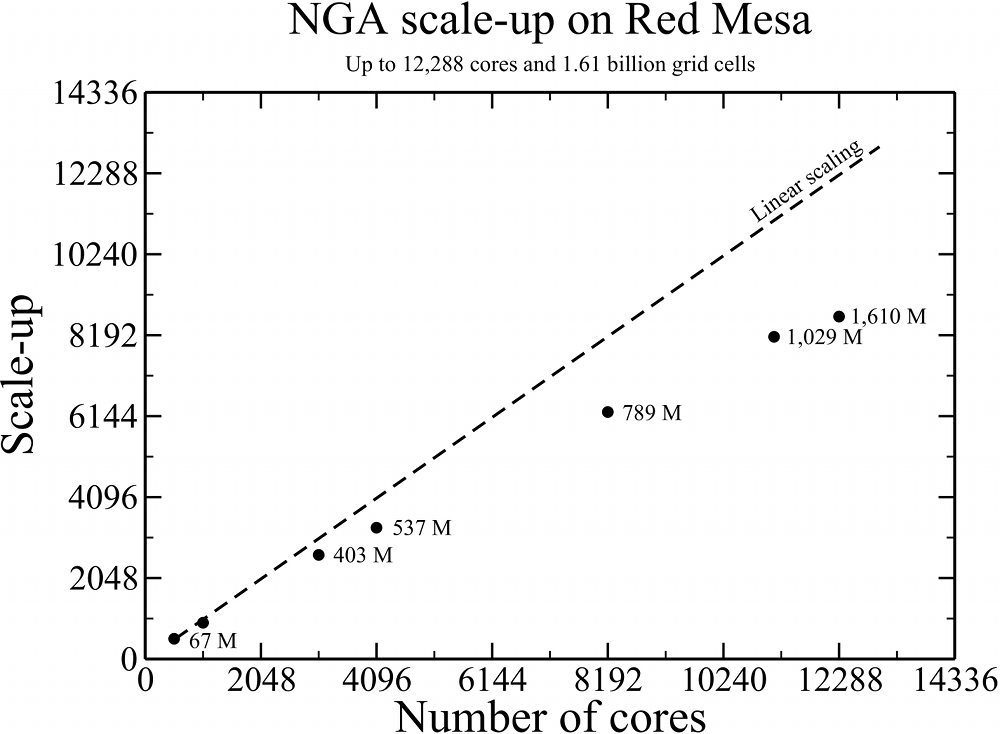Software
Large eddy simulation (LES) has been shown to be highly suited for the computation of the strongly unsteady phenomena that occur in combustion devices. Still, LES of multi-physics problems is a young research field, and especially in the areas of multiphase flows and combustion, the required models are often non-existent or lack the desired accuracy. Contrarily to direct numerical simulation (DNS) where all flow scales are resolved, LES separates turbulent flow fields into large-scale resolved and small-scale unresolved components by a spatial filtering procedure, and models the unresolved components. Even resolving only the large-scale turbulence significantly improves the accuracy of flow predictions compared to Reynolds averaged approaches (RANS), while greatly reducing the computational cost in comparison to DNS.

Previous work aiming at extending high order fully conservative numerical algorithms to complex reacting turbulent flows ultimately led to the development of an efficient multi-physics DNS/LES code of arbitrary accuracy, called NGA. This code has been used in numerous DNS and LES studies including liquid atomization, spray dynamics, spray combustion, premixed, partially-premixed, and non-premixed turbulent jets and combustion in technical devices, such as large-scale furnaces, internal combustion engines, and aircraft engine afterburners. Such a tool provides a unique platform on which physical phenomena can be studied through detailed simulations, and new LES models can be developed and tested. Future development will include an implicit compressible formulation, moving immersed Boundaries, and multi-block/overset grids capabilities. NGA is routinely run on hundreds of cores and solved very large and complex problems using millions of grid cells. The largest simulations have used over 10,000 cores to simulate a diesel jet with over 1 billion grid cells.


